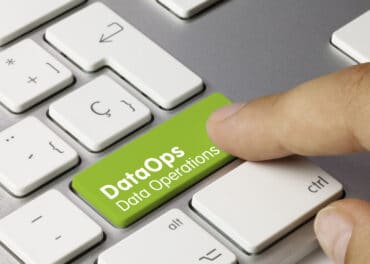
From logistics to fraud prevention and across industries, data enrichment is being used, providing new insights and streamlining processes.
With 2021 behind us and eyes set on the future, it is a good time to look into industry trends and promising developments. One perhaps underreported innovation made possible by the data boom and big data in recent years is data enrichment. We have seen several impressive applications of it already, but the sheer potential it carries could even permit us to call it underutilized. It has a long way to go to manifest its full power, and experts predict that in 2022, we will see it put to more ingenious uses.
From data collection to data enrichment
From social media powerhouses to smaller enterprises, every company with digital infrastructure is collecting data. Some of this information is put to good use to inform everyday functions and optimize processes. Yet, as several experts across industries report time and again, there is so much more data could be doing for us on so many levels. For example, a Fivetran survey from August 2021 found that data analysts tend to be inundated with requests, and 71% have had to work on over four different types of projects at the same time.
Various solutions have been proposed to this issue, including but not limited to training more data analysts, disseminating data literacy, data workshops, better data request templates, regular data cleanup cycles, and so on. And depending on the particular situation, all of these should, and will, help. Data enrichment constitutes one more expedient way to put such information to good use, be it internal company data, purchased data sets, or even publicly available data – referred to as OSINT: open-source intelligence.
Simply put, data enrichment is all about setting up algorithms to scan available data for what is relevant to the original data set, sourcing the new information, and using it to enrich the initial input. Data is enriching data, and, when done correctly, it can help identify connections between data points. Existing and potential data enrichment tools vary in form and function, but all follow the same general principle of handling, combing, refining, and improving raw data. For example, there are email lookup modules enriching the risk ratings of online shoppers by sourcing and processing information readily available on the web, and there are data enrichment tools that will generate profiles of website visitors to inform a company’s strategy and goals. We have also already seen data enrichment modules related to funding for startups, targeted marketing, completing customer and prospect records, and so on.
Unlike some other ways to handle data, such as the mere collection of it with the intent to later refine it, data enrichment has a different workflow: Starting with your input, your given data set, you are asking the module to help you complete a picture to make connections that will help you make better decisions. In general terms, for data enrichment to work well, the databases it uses must be of high quality, as should be the algorithms.
There is a wealth of existing and potential applications for data enrichment, which explain why it is such a major upcoming trend, despite having largely been flying under the radar in recent years. Let’s start to unpack its potential.
See also: Financial Services 2022: Customer Experience Looms Large
Case study: Fraud fighting
Merchants who trade online, as well as anyone who accepts card not present (CNP) payments, such as creators with donation schemes set up and subscription service providers, are susceptible to increasingly complicated and elaborate bouts of fraud. Common phenomena include friendly fraud, chargeback fraud, return fraud, triangulation fraud, with each of these and more having sub-categories and variations in implementation. The landscape is similar to the oft-quoted “game of cat and mouse” that cybercriminals and cybersecurity experts play, except here, it is specific to fraudsters and anti-fraud analysts.
All the above can affect a merchant’s livelihood by effectively stealing their merchandise, defrauding them of the cost of a product, ruining their good standing with banks and service providers, reserving their merchandise to help a competitor, and much more – even putting them out of business as a worst-case scenario, after several and mishandled attacks.
At the same time, crime that targets consumers themselves – a private individual’s credit cards, for example – can have a devastating impact on merchants too. One example of this is chargebacks. Chargebacks are a failsafe available via card issuers to resolve disputed purchases. This could be because the shopper received a faulty item or no item, for example. Or because their card details were stolen and funds used without their permission. Although it’s the cardholder whose funds are being stolen, almost all chargebacks bring losses for the merchant, as the latter will pay out of pocket for the price of the lost merchandise, plus processing fees and more. The total is estimated at 2.60 to 3.20 times the cost of the item(s). What’s more, every merchant ought to keep their chargeback rate low. Calculated as the ratio of the number of chargebacks per total transactions, if it’s too high, it can mean inflated bank fees or even blacklisting. Therefore, merchants have good reason to proactively fight fraud, even when it is seemingly at their customers’ expense.
Naturally, they have turned to anti-fraud platforms and tools. But these tend to introduce friction, and they can cost you customers. According to recent estimates, there are anywhere from 12 to 24 million eCommerce sites globally. In theory, it should be easy to shop exactly what and how you want online – yet only 2.86% of e-shop visits convert into a sale. There are several reasons why this number is so low, but a major one is known as customer churn. Due to friction introduced at various steps in the checkout process, as well as due to false positives, where payments are rejected despite being legitimate, consumers sometimes get disgruntled and will abandon their cart, never to return, turning to a competitor instead.
Data enrichment in action
Although the safest avenue would be to request a host of documents for verification, every time, this puts shoppers off. It’s a delicate balance that must be maintained for both merchant and shopper to be happy in this equation, as well as protected from fraudsters and scammers.
Data enrichment provides a welcome solution to this conundrum – for instance, by using email addresses and/or phone numbers as the initial set.
How does this work? As a shopper signs up for an account, they are invariably asked for their email address. This happens at almost every online store. At that point, data enrichment starts to take place behind the scenes: A reverse email lookup module searches OSINT sources for matches to it. None of this information is private or personal but, combined, it gives us enough knowledge to assess whether this is a real person and perhaps whether they are a fraudster or not. For example, such a search can return the below data points, combining them all into an easy-to-read profile. And from each, we can make some assumptions.
- This email address is on a free email provider > So it could have been registered by a fraudster.
- It has been included in two data leaks, with the oldest in 2013 > So it’s been in existence since at least 2013.
- There is no Facebook or LinkedIn profile associated with it > This could be a bad sign.
- There is an active Twitter profile and accounts on GitHub and TripAdvisor associated with it > These are all signs of a real person and an active internet user.
Above are some of the examples of what information enriched email addresses can give us in our efforts to fight fraud. The conclusions provided for each point above are not final but rather indicators that will themselves combine with other data points such as IP address analysis, device fingerprinting, geolocation data, velocity data, and more, to give us a transparent (or non-transparent, depending on the anti-fraud vendor) risk score. Finally, this risk score can inform automated next steps, such as additional verification at checkout, or manual review by an analyst.
Notice that all of the above information is gathered without explicitly asking the shopper for anything they would not expect to be asked – just their email – while the remaining data mentioned above are gathered automatically. As a result, the process remains completely frictionless, the risk of churn is reduced, and the customer journey remains pleasant and unintrusive.
Applications in marketing and sales
This use of data enrichment as a fraud prevention technique is a testament to the immense power it possesses; it has simultaneously made detection more sophisticated and removed the vital pain point of churn. But there is much more it can do across several other sectors.
Starting once more with email addresses, data enrichment for marketing uses freely available databases to validate customers’ email addresses to be used for newsletters and outreach. This is a great example of the cumbersome, time-consuming task that clever automations such as data enrichment can take off the hands of professionals, so they can focus on more demanding work that matches their experience and expertise. Meanwhile, identity solutions allow for cookie-less, anonymized tracking of web shoppers, yielding even more data that needs to be arranged in meaningful ways and used to improve the customer experience or inform expansions and new product ranges.
What’s more, the rise and rise of SaaS models allows for the collection of even more data than before, which can be enriched to give companies a deeper understanding of their clients as individuals. And, of course, the clearer the picture, the more targeted and successful one’s marketing efforts can be. The benefits of enriching marketing data in this way include the potential to write personalized emails or to separate customers into demographics and groups, tailoring the content to each. Meanwhile, the overall picture will inform a company about who its current target market is, allowing for more insight into the customer pool’s needs and preferences through powerful analytics.
According to Statista, the marketing-related data market is valued at $52 billion worldwide, with “improved engagement and receptiveness” cited as the top benefit in gathering and/or acquiring it. However, it is not just a matter of collecting said data but of also putting it to good use.
Meanwhile, data enrichment tools already available for the popular CRM platform Salesforce (as well as others) show the way forward and hint at new uses for this technology in the years to come. There are enrichment modules that target data accuracy, flagging problematic entries, and aiding with data cleansing. For prospects and leads, data enrichment modules turn to OSINT sources to return powerful intelligence on each one’s background and needs, which allows salespeople to tailor pitches and material to their needs, showing them exactly how the promoted product(s) can benefit the prospect. One example of this is firmographic/technographic information, which maps the technologies and infrastructure already used by the prospective clients.
Data enrichment in IoT
Data enrichment and the IoT align in several different ways, with the devices serving to gather data, as well as benefiting from enriched data themselves. The wealth of data gained from connected devices has certainly been lauded time and again; yet, it is so often one-dimensional, failing to take into account additional factors or to effectively combine in order to power true innovation and streamlining. This is where data enrichment comes in.
One of the more straightforward examples is pedometers such as Fitbit devices, whose sensors gather data that can be linked to insurance and healthcare provider platforms, enriching customer and patient profiles in order to tailor the service to their needs. In telecommunications, user device-sent signal strength and data usage information helps companies assess whether their products cover consumers’ needs, also allowing them to be proactive in recommending an upgrade, where appropriate. Load sensors in long-haul trucks send information back to the logistics provider to enrich the records of each of their clients and routes, which enables them to augment the process in the long term.
Yet such enriched data also allows for fine-tuning the function and settings of all manner of connected devices, including the thermostats of hospitality units (by looking at what different ages and types of visitors prefer); each employee’s security clearance in a building (by revoking unnecessary permissions until they are required again); machinery at factories’ production lines (tweaking their usage cycle per data-enriched findings); and so many more.
A promising development comes from IBM, which has been bringing blockchain technology into the mix. After enriching IoT events with non-IoT data, the company’s service writes the findings to the blockchain. As they explain, it is only certain data events that are important enough to warrant storing them on the blockchain; however, when they are, they are fully enriched in order to be more useful and provide more complete information with a lot of value.
In the year and years to come, data enrichment will find more IoT-related applications, itself becoming more streamlined and allowing for the optimization of all manner of processes.
A bright future
The more data is gathered, the more useful and valuable enrichment will be, moving forward – as will data wrangling, monitoring, integration, analysis, and every other method that allows us to better combine and interpret the findings. From logistics to fraud prevention, data enrichment is already used in simple as well as more elaborate ways, providing new insight and streamlining processes.
Moving forward, existing data enrichment modules will be improved, refining their algorithms, and expanding their sources. More industries and sectors will enter the fold, adopting innovations to make sense of the immense amounts of data at their disposal. And certainly, data enrichment methods are expected to not just be more widely adopted and appreciated but become more elaborate and complicated in 2022 and beyond, scaling not just up but out, too.





























